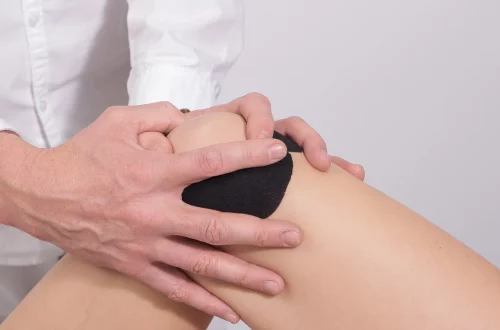
Mastering the Pronated Grip: Techniques for Strength and Stability
Mastering the pronated grip is an essential skill for anyone looking to enhance their strength training regimen. This grip position, where the palms face downward, is commonly used in various exercises and sports, contributing to improved performance and injury prevention. Understanding the nuances of the pronated grip not only aids in maximizing your training efforts but also plays a crucial role in stabilizing the body during movements that require precision and power.
As you delve into the world of strength training, you’ll discover that the way you grip the equipment can significantly affect your workout outcomes. The pronated grip, often employed in exercises such as bench presses, rows, and pull-ups, engages multiple muscle groups and promotes better alignment of the joints. This grip is particularly beneficial for developing the back, shoulders, and arms, and serves as a foundation for more complex movements.
Embracing the pronated grip can also lead to a greater understanding of body mechanics and movement patterns. Whether you are a beginner or an experienced athlete, mastering this grip can pave the way for enhanced stability, balance, and overall strength. In the following sections, we will explore various techniques and strategies to effectively incorporate the pronated grip into your training routine, ensuring you find the right approach that works for you.
Understanding the Mechanics of the Pronated Grip
The pronated grip involves positioning your hands so that your palms face away from you. This grip not only impacts how you lift weights but also influences the engagement of different muscle groups. When you use a pronated grip, your forearms, shoulders, and back are activated in a way that promotes overall strength and stability.
One of the primary benefits of the pronated grip is its ability to enhance muscle recruitment. For instance, when performing a pull-up, using a pronated grip allows for greater engagement of the latissimus dorsi, the large muscle in your back responsible for pulling movements. This grip also helps in activating the rhomboids and trapezius muscles, which play crucial roles in maintaining posture and shoulder stability.
Moreover, the pronated grip can aid in preventing injuries. Many athletes and fitness enthusiasts experience shoulder discomfort due to improper gripping techniques. By utilizing a pronated grip, you can align your arms and shoulders in a manner that reduces strain on the joints. This alignment is key for preventing injuries, especially during overhead movements or heavy lifts.
When working with a pronated grip, it’s essential to focus on your wrist position. Keeping your wrists straight and in line with your forearms will help distribute the weight evenly and maintain proper form. This attention to detail not only enhances performance but also contributes to the longevity of your training routine, as it minimizes the risk of developing repetitive strain injuries.
Incorporating exercises that utilize the pronated grip can also improve your overall grip strength. A strong grip is fundamental for various athletic pursuits and everyday tasks. As you engage in exercises like deadlifts, rows, and push-ups with a pronated grip, you’ll notice an increase in your ability to hold onto weights securely, which translates to better performance across all aspects of your training.
Exercises to Enhance Strength with a Pronated Grip
To fully leverage the benefits of the pronated grip, it’s crucial to incorporate specific exercises into your routine. These exercises target various muscle groups while emphasizing the importance of grip strength and stability.
One of the most effective exercises for mastering the pronated grip is the bent-over row. This movement targets the upper back, biceps, and shoulders while promoting proper posture. To perform a bent-over row, stand with your feet shoulder-width apart, holding a barbell or dumbbells with a pronated grip. Bend slightly at the knees and hinge at the hips, maintaining a flat back. Pull the weight towards your torso while squeezing your shoulder blades together, then lower it back to the starting position.
Another excellent exercise is the barbell bench press. This classic movement emphasizes the chest, shoulders, and triceps, making it a staple in many strength training programs. To execute the bench press with a pronated grip, lie on a bench with your feet flat on the ground. Grasp the barbell with your hands slightly wider than shoulder-width apart, ensuring your palms face away from you. Lower the barbell to your chest, keeping your elbows at a 45-degree angle, then press it back up to the starting position.
Pull-ups are another fantastic exercise that utilizes the pronated grip effectively. They are highly beneficial for developing upper body strength and endurance. To perform a pull-up, grasp a pull-up bar with your palms facing away from you, ensuring your grip is slightly wider than shoulder-width. Hang from the bar with your arms fully extended, then pull your body upward until your chin clears the bar. This movement not only strengthens your back and arms but also engages your core for stability.
In addition to these exercises, incorporating variations such as the pronated grip deadlift can further enhance your strength training routine. This compound movement targets the entire posterior chain, including the hamstrings, glutes, and lower back. To perform a deadlift with a pronated grip, stand with your feet hip-width apart, grasping the barbell with your palms facing down. With a straight back, lift the barbell from the ground by extending your hips and knees, maintaining a strong grip throughout the movement.
These exercises can be incorporated into your training regimen to build strength effectively while utilizing the pronated grip. Remember to focus on proper form and technique to maximize the benefits and reduce the risk of injury.
Tips for Developing Stability with the Pronated Grip
Stability is a critical component of effective strength training, and mastering the pronated grip can significantly contribute to improving your overall stability during workouts. Here are some valuable tips to help you develop stability while using this grip.
First and foremost, ensuring proper alignment is essential. When utilizing a pronated grip, your wrists should remain in a neutral position, avoiding excessive bending or twisting. This alignment will help distribute the load evenly across your forearms and prevent unnecessary strain on your wrists. Maintaining a straight wrist position is crucial for stability, especially during heavy lifts.
Another vital aspect of developing stability is engaging your core. A strong core acts as a foundation for all movements, helping you maintain balance and control during exercises. Before lifting, take a moment to activate your core muscles by drawing your belly button towards your spine. This will not only enhance stability but also provide additional support to your lower back during heavy lifts.
Incorporating unilateral exercises can also aid in improving stability with a pronated grip. Unilateral movements, such as single-arm dumbbell rows or single-leg deadlifts, challenge your body to stabilize itself while lifting. This promotes better coordination and balance, ultimately enhancing your performance in bilateral exercises where both arms or legs are engaged.
Additionally, consider using resistance bands or stability balls in your training. These tools can be incorporated into exercises that utilize the pronated grip, providing an extra challenge to your stability. For example, performing a banded row with a pronated grip can enhance your muscle engagement and stability as you pull against the resistance of the band.
Lastly, don’t forget the importance of progressive overload. Gradually increasing the weight or resistance you use while maintaining a pronated grip will help you build strength and stability over time. Start with a manageable weight, focusing on form and stability, then progressively challenge yourself as you become more comfortable with the grip.
By implementing these tips into your training routine, you can develop greater stability while mastering the pronated grip, leading to improved performance and reduced risk of injury.
Common Mistakes to Avoid with the Pronated Grip
While the pronated grip can offer numerous benefits, there are common mistakes that individuals often make which can hinder progress and lead to injury. Being aware of these pitfalls is crucial for maximizing the effectiveness of your training.
One common mistake is gripping the bar or weights too tightly. While it’s essential to maintain a strong grip, over-gripping can lead to unnecessary tension in your forearms and wrists. This tension can cause discomfort and fatigue, ultimately affecting your performance. Aim for a firm but relaxed grip, allowing your muscles to engage without excessive strain.
Another mistake is neglecting proper shoulder positioning. When using a pronated grip, it’s important to keep your shoulders down and back, avoiding excessive elevation. This positioning not only protects your shoulder joints but also facilitates better muscle engagement throughout your workout. Be mindful of your shoulder alignment, especially during overhead movements or when lifting heavy weights.
Additionally, many individuals fail to engage their core when performing exercises with a pronated grip. A strong core is essential for maintaining stability and proper form. If you neglect core engagement, you may find yourself swaying or losing balance during your lifts. Prioritize activating your core before starting any exercise to enhance overall stability.
Improper warm-up routines can also contribute to ineffective training with a pronated grip. Jumping directly into heavy lifting without adequately warming up your muscles can lead to injuries. Incorporate dynamic stretches and mobility exercises that target the shoulders, wrists, and back to prepare your body for the demands of strength training.
Lastly, many people overlook the importance of flexibility and mobility training. A limited range of motion can negatively impact your ability to perform movements with a pronated grip effectively. Incorporating stretching and mobility work into your routine can improve your overall performance and reduce the risk of injuries.
By avoiding these common mistakes, you can ensure that you are effectively utilizing the pronated grip to its fullest potential, leading to better strength and stability in your training.
In conclusion, mastering the pronated grip is a valuable skill that can significantly enhance your strength training journey. By understanding the mechanics, incorporating specific exercises, and focusing on stability while avoiding common pitfalls, you can optimize your workouts and achieve your fitness goals.
*Disclaimer: This article is for informational purposes only and should not be considered medical advice. If you have health concerns or medical conditions, please consult a healthcare professional for guidance.*




